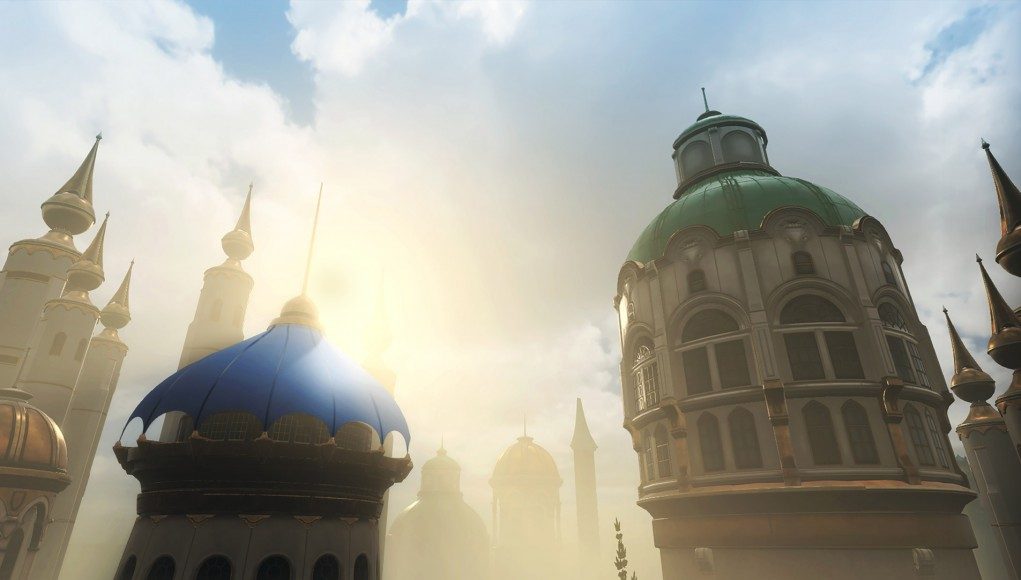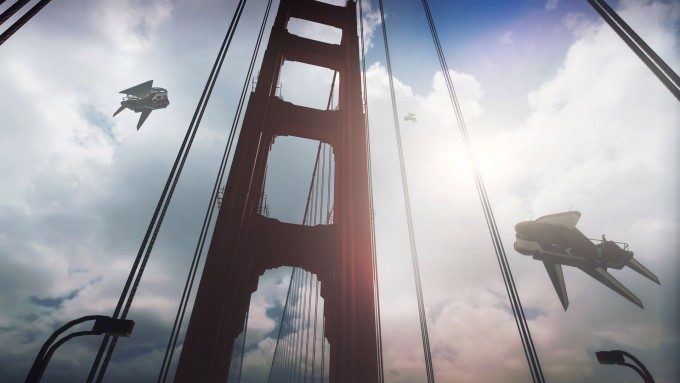Linden Lab, the company behind Second Life (2003), has been cooking up their new VR-ready virtual world in stealth for some time now. The company has revealed two screenshots giving us the first glimpse of what that new world will look like.
‘Stylish’ and ‘beautiful’ are two words that come to mind when looking at the first two screenshots of Project Sansar, but those same two words are rarely associated with Linden Lab’s aging virtual world, Second Life.
The new views are but a glimpse into what the company hopes will become an expansive virtual world built with the new generation of immersive VR devices in mind; clearly visuals, and perhaps more importantly, style, are a major focus.
While Second Life is capable of looking good in the right circumstances, the company acknowledges that it isn’t optimized for the high-performance rendering requirements of VR headsets. That’s one reason why Linen Lab is starting from scratch with Project Sansar.
“The fact is, we will never ever get the framerate in Second Life to be what it needs to be to have a smooth comfortable experience in the Oculus [Rift],” CEO Ebbe Altberg told me. “We now have VR in Sansar and it’s super smooth… we have the framerate and we’ve got some really beautiful scenes up and running.”
The two new views of Sansar show a more modern, and apparently stylized world, rather than aiming for photorealism. Style is important to any game that plans to stick around for a long time; cutting-edge graphics are only cutting-edge for so long, whereas a stylized world derives its looks from internal and self-controlled means, rather than the graphical fashions of the day.
As I’ve done before, I’ll point to a title like Halo 3 (2007)—a game with a stylistic approach combined with a reasonably good lightning system—as having aged much better than games that went for the high-poly & high-texture of the time.
Lighting is crucial because it suggests form even without any texture, whereas texture without lightning can create misleading illusions of form. Without a decent lightning system, your textures will look like cardboard no matter how high resolution they are. Thankfully, it looks like lightning is a big focus for project Sansar, with the new views showing simple but effective reflections, bloom, and atmospheric perspective. This will keep it looking fresh for years to come as long as Sansar sticks with a stylized aesthetic.
But consistent style is major hurdle for a company transitioning from Second Life, a platform that offered users near infinite freedom in user-generated content creation, creating a range of content that is as varied performantly as it is aesthetically.
“Second Life is going to have its 12th birthday this year. The way Second Life was built was quite substantially ahead of its time,” Altberg told me. “It achieved something that, back then, was borderline nuts to even try to accomplish…. to retro-fit SL, to modernize that stack to become as performant as you need it to be would be a massive undertaking, and we decided it would be easier and less disruptive to start anew, and leave SL as it is for those that love it for what it is.”
Update (11/5/15, 11:51AM CT) – A Linden Lab spokesperson reached out with the following clarification:
“We won’t actually create content nor will we dictate a cohesive style for Sansar experiences; instead, users create the experiences and they’ll be extremely diverse in type and style vs. a singular cohesive “game” world. These [screenshots] are merely to show the diverse range of experiences our current alpha users are creating and how much detail you can derive from our platform.”
Original article continues below.
Sansar on the other hand, may ultimately encourage or require that creators abide by a certain set of performance guidelines, with the help of Linden Lab.
“Our users are starting to understand that VR is a different medium and they may need to approach it differently than they have in the past [for performance and experiences],” he said. “We’ll do a lot of things to help users understand how to create performant content. There’s a lot of work yet to do, but we have plans for things like automatic optimization of content, polygon reduction of content that preserves quality at the same time, including showing users that create content some sort of visual indication of how performant their content is going to be across various platforms… I’ve already see stuff in Sansar that I know you’d never see in SL.”








